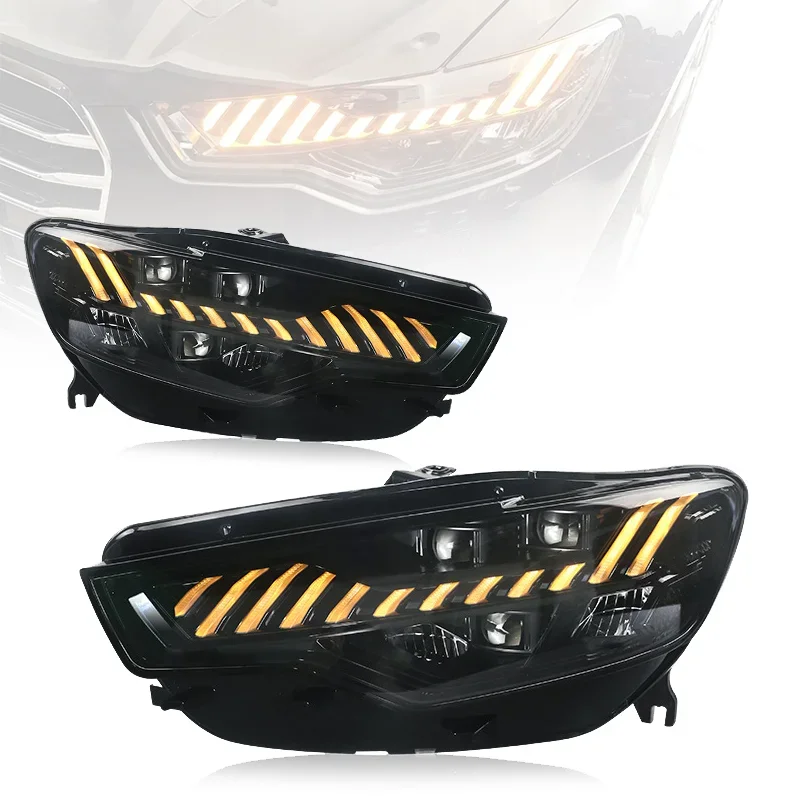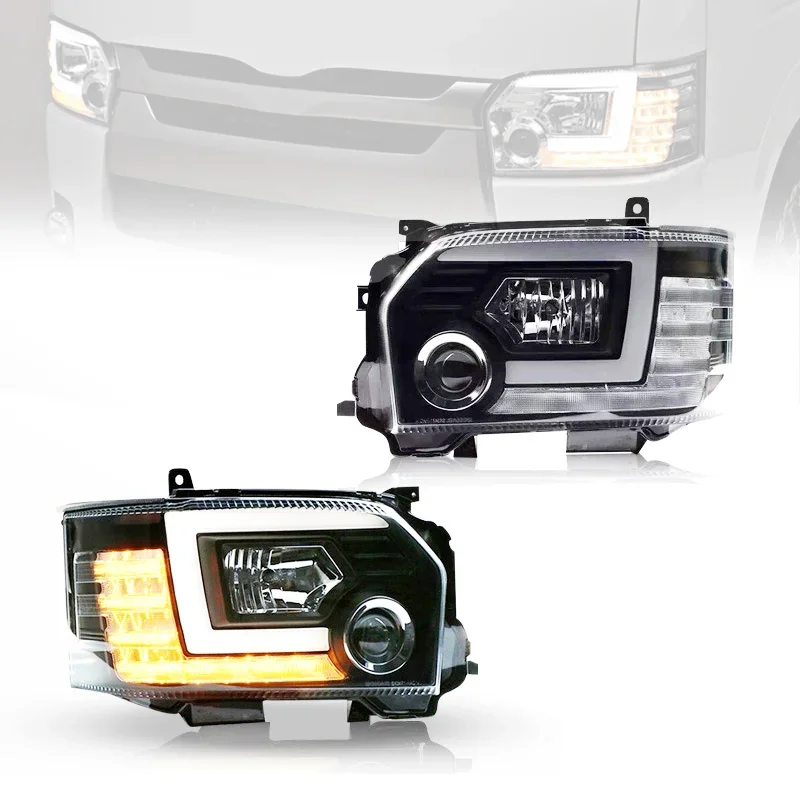Headlights are an essential component of every car, providing both safety and visibility on the road. Whether you're driving at night, in foggy conditions, or during heavy rainstorms, having the right headlights can make all the difference in keeping you and your loved ones safe. But with so many options available on the market today, how do you choose the right headlights for your car? Don't worry! In this comprehensive guide, we will walk you through everything you need to know about automobile headlights and help you make an informed decision. So buckle up and get ready to illuminate your path like never before!
Understanding the Different Types of Headlights
When it comes to understanding the different types of headlights for your car, it's important to know that not all headlights are created equal. There are several options available, each with its own set of features and advantages.
First up, we have halogen headlights. These are the most common type found in older vehicles and use a tungsten filament enclosed in a glass bulb filled with halogen gas. Halogen headlights produce a warm, yellowish light and are known for their affordability and ease of replacement.
Next on the list are xenon HID (High-Intensity Discharge) headlights. These lights rely on an electrical charge passing through xenon gas to create an intense white beam of light. Xenon HIDs offer better visibility than halogens and last longer, but they do come at a higher price point.
If you're looking for even more advanced technology, consider LED (Light-Emitting Diode) headlights. LEDs use semiconductors to emit light when an electrical current passes through them. They provide bright illumination, consume less energy than other types of bulbs, and have a longer lifespan.
There's adaptive headlights or AFS (Adaptive Front-Lighting System). These innovative headlights can adjust their direction based on your steering input or vehicle speed, providing enhanced visibility around curves and corners.
Now that you have an overview of the different types of headlights available, you can start narrowing down your options based on your preferences and budget. Remember that selecting the right type will ultimately depend on factors such as brightness level desired, energy efficiency requirements, and any specific regulations in your area regarding headlight usage. So take some time to research each option further before making a decision!

The Importance of Choosing the Right Headlights
When it comes to driving, your headlights play a crucial role in ensuring your safety on the road. They not only illuminate the path ahead but also make your vehicle visible to other drivers. That's why choosing the right headlights for your car is of utmost importance.
One key reason why selecting the appropriate headlights matters is their impact on visibility. Different types of headlights offer varying levels of brightness and beam patterns, affecting how well you can see and be seen by others. For example, LED headlights are known for their superior brightness, providing excellent illumination even in dark or adverse weather conditions.
Another important aspect to consider is energy efficiency. Upgrading to more energy-efficient headlight options such as LED or HID lights can help reduce fuel consumption since they consume less power from your vehicle's electrical system compared to traditional halogen bulbs.
Moreover, selecting the right type of headlights ensures compatibility with your car's electrical system and wiring harnesses. Using incompatible or improperly installed headlights may result in overheating or malfunctioning, potentially causing damage to both your car and its lighting components.
In addition to safety considerations, aesthetics also come into play when choosing the right headlights for your vehicle. The appearance of different types of lights can significantly enhance or alter the overall look of your car.
Investing time into researching and selecting suitable automobile headlights pays off in terms of safety, functionality, energy efficiency, and aesthetic appeal. So next time you're considering upgrading or replacing your current set of lights – remember that making an informed choice will contribute greatly to a safer and more enjoyable driving experience!
Factors to Consider When Choosing Headlights
When it comes to choosing the right headlights for your car, there are several factors that you need to consider. These factors will not only affect the performance of your headlights but also impact your overall driving experience.
One of the first things to consider is the type of bulb used in the headlights. There are various options available such as halogen, LED, and HID bulbs. Each type has its own advantages, so it's important to research and understand which one would be most suitable for your needs.
Another factor to consider is the brightness or intensity of the headlights. This is measured in lumens, with higher lumens indicating brighter lights. It's important to strike a balance between brightness and glare – too bright lights can blind other drivers on the road.
The beam pattern is another crucial factor when choosing headlights. The beam pattern determines how far and wide the light spreads on the road. Some headlights have a focused beam pattern while others have a wider spread.
Durability is yet another important consideration. Headlights face various environmental conditions such as extreme heat, cold, moisture, and vibrations while driving. Opting for durable materials like polycarbonate lenses can ensure longevity.
It's essential to check if your chosen headlight meets legal requirements in your area. Different regions may have specific regulations regarding headlight color temperature or additional features like daytime running lights (DRLs).
Considering these factors will help you make an informed decision when selecting new headlights for your car that not only enhance visibility but also improve safety on the road.

Benefits of Each Type of Headlight
When it comes to choosing the right headlights for your car, it's important to understand the benefits of each type. Here, we'll take a closer look at the different types of headlights and what sets them apart.
First up, halogen headlights. These are the most common type and offer a good balance between cost and performance. Halogen bulbs provide reliable illumination and can be easily replaced when needed.
Next, we have LED headlights. These are becoming increasingly popular due to their energy efficiency and longevity. LED lights produce a bright white light that enhances visibility on the road. They also require less power to operate compared to other types of headlights.
If you're looking for even more brightness, HID (High-Intensity Discharge) headlights might be just what you need. With their intense white light output, HID lights greatly improve visibility in low-light conditions. However, they do tend to come with a higher price tag than halogen or LED options.
There are adaptive headlights which use sensors to detect steering movements and adjust accordingly. This helps illuminate corners as you turn for better visibility during nighttime driving.
Each type of headlight has its own advantages depending on your specific needs and preferences. It's important to consider factors such as budget, desired brightness level, energy efficiency, and ease of replacement when making your decision.
Remember that proper maintenance is key for any type of headlight you choose. Regularly clean the lenses from dirt buildup or oxidation which can dim their effectiveness over time.
By understanding these benefits and considering your unique requirements,you can make an informed decision about which type of headlight is best suited for your car.
Tips for Proper Maintenance and Replacement of Headlights
1. Regular Cleaning: Keep your headlights clean to ensure maximum visibility on the road. Use a soft cloth or sponge with mild soap and water to gently wipe away dirt, grime, and bugs from the lenses.
2. Check for Bulb Life: It's important to regularly inspect your headlights for any signs of dimming or flickering. If you notice a decrease in brightness, it may be time to replace the bulbs.
3. Opt for LED Upgrades: Consider upgrading your headlights to LED bulbs as they offer improved visibility and longevity compared to traditional halogen bulbs. LEDs are energy-efficient and provide brighter illumination.
4. Align Your Headlights: Misaligned headlights can lead to poor visibility and blind spots on the road. Make sure that your lights are properly aligned by adjusting them using the manufacturer's instructions or seeking professional help.
5. Replace Both Bulbs Together: When one headlight bulb burns out, it is recommended to replace both at the same time. This ensures equal lighting output from both sides of the vehicle.
6. Choose High-Quality Replacements: When replacing headlight bulbs, opt for high-quality options from reputable manufacturers. Cheap alternatives may not last as long or provide adequate illumination.
7.Use Protective Films or Covers: To prevent premature yellowing or damage caused by UV rays, consider applying protective films or covers onto your headlights.
Materials like clear bra film can shield against scratches and discoloration.
Remember that proper maintenance of your car's headlights is essential for safe driving conditions at night! By following these tips, you'll ensure optimal performance and longevity from your vehicle's lighting system.

Conclusion
Choosing the right headlights for your car is crucial for ensuring optimal visibility and safety on the road. By understanding the different types of headlights available, considering important factors, and knowing how to properly maintain and replace them, you can make an informed decision that suits your needs.
Remember that each type of headlight has its own benefits. Halogen headlights are cost-effective and widely used, while HID headlights offer improved brightness and longevity. LED headlights provide energy efficiency and a sleek appearance, while laser headlights offer even greater brightness and range.
When making your decision, consider factors such as bulb lifespan, color temperature, beam pattern, compatibility with your vehicle's electrical system, local regulations regarding headlight usage, budget constraints,and personal preferences.
Proper maintenance of your headlights is essential for their longevity and performance. Regularly clean the lenses to ensure maximum light output. If a headlight bulb burns out or becomes dim over time,it should be replaced promptly to maintain optimal visibility on the road.
In conclusion,the right choice of automobile headlights plays a significant role in enhancing overall driving experience,safety,and aesthetics.
Choosing the appropriate type of headlight based on factors like durability,brightness,and personal preference will enable you to enjoy clear visibility during nighttime drives or adverse weather conditions.
